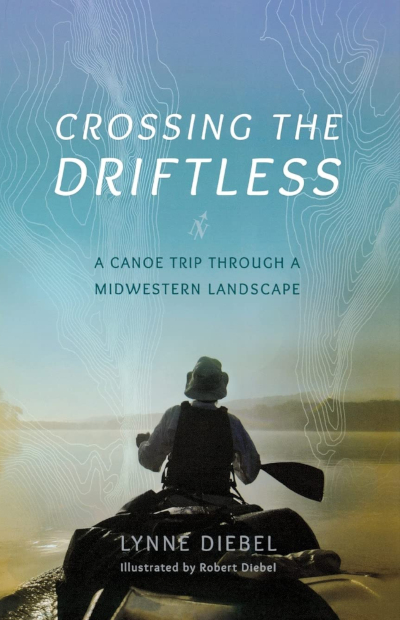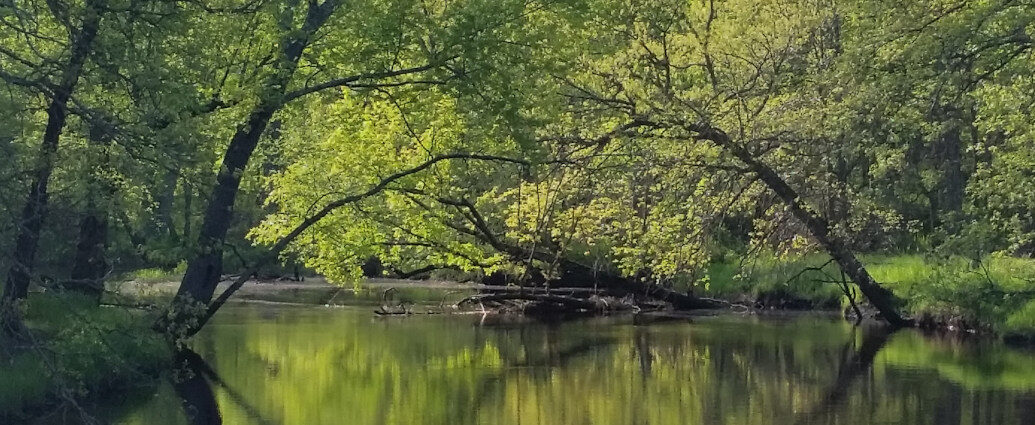Have you ever stopped to consider what inspires people to do something big? To be so inspired that you don’t let the nagging voice of doubt convince you otherwise. All through history we have heard of these things. There are famous sayings attributed to these inspirations. Perhaps the most famous is” a journey of a thousand miles begins with the first step”.
For Lynne and her husband Bob, inspiration came from viewing a map on a wall at a history center in Minnesota. It was no ordinary map, but a map by the famous explorer Joseph N. Nicollet. Nicollet’s map titled the Hydrographical Basin of the Upper Mississippi River in 1843. Joseph Nicollet, a cartographer who was tasked with creating a map of this new territory. As Bob surveyed the map, he noted that they could canoe from their old homeland in Minnesota to their current home in Stoughton, Wisconsin.
 Lynne is already an established author, having previously written canoeing guides. This book is much more than just another canoeing book. Lynne takes you on a tour of the Driftless region from the seat of a canoe. From this point of observation, you will get a real feel for the geography that makes up the Driftless Area. If you are looking to deepen your knowledge about the environment, history, ecology, geology, and more, this is the book for you. Just a few pages in, you will become acutely aware of the amount of research Lynne put into this book. Amongst all that it is, it is still the story of a couple and their adventure canoeing home, which didn’t always go as planned. There are some lighthearted moments of conversations with folks they met, and several setbacks like the rickety portage cart that gave way too soon.
Lynne is already an established author, having previously written canoeing guides. This book is much more than just another canoeing book. Lynne takes you on a tour of the Driftless region from the seat of a canoe. From this point of observation, you will get a real feel for the geography that makes up the Driftless Area. If you are looking to deepen your knowledge about the environment, history, ecology, geology, and more, this is the book for you. Just a few pages in, you will become acutely aware of the amount of research Lynne put into this book. Amongst all that it is, it is still the story of a couple and their adventure canoeing home, which didn’t always go as planned. There are some lighthearted moments of conversations with folks they met, and several setbacks like the rickety portage cart that gave way too soon.
As someone who has spent much time in Driftless and feels they know much about the area I learned many things from this book. For instance, I didn’t know that the area around the Driftless is known as Bluff lands. Of all the descriptions of the Driftless I have read, Lynn’s is hands down the best: “To me, it is all the Driftless, a rugged landscape of forested hills, deep coulees, bedrock outcrops, and bluffs; of caves, sinkholes and disappearing streams; of effigy mounds and geologic mounds; of bottomland and blufftop farms. And flowing down the many coulees and valleys is an intricate network of streams.” This description fires a kaleidoscope of images in my mind’s eye as the landscape morphs from one topography to another. That’s one thing about Driftless, it’s a landscape of change. Its hills that flow into valleys which in turn flow back into other hills.
If you’re ready to jump in, the next 225 pages will take you on a modern-day Odyssey of sorts. A 12-day journey through the Drifltess region like no other. The book is broken down into chapters about their travels. Each chapter is prefaced with one of Bob’s hand sketched maps of the waterways with points of interest that includes a compass for navigation. Along the bottom of the map is a rectangle that lists the starting point and ending destination that will be covered in the chapter. By the time they get home they will have covered 359 miles of Driftless water with several portages.

Much like the Odyssey they encountered numerous challenges. They had to paddle upstream for four days, a total of 70 miles. For those that have never paddled against the current, the closest comparison might be pushing a stalled vehicle. As soon as you stop pushing you lose all momentum. Now consider doing that for 70 miles! Having capsized early on they are acutely aware of any changes in the weather. Wind forced them ashore more than once, they dealt with crazy weather, windy white caps on Lake Mendota and even a pesky racoon. There are many parallels to the Odyssey with modern twists. There were no singing sirens, but intense light of night barge traffic.
During my conversation with Lynne her enthusiasm and fondness for the journey is very evident as she recalls the trip. She relays it with the same joy as if meeting with an old friend. She recounted things from the trip like the time they saw an eagle pull a Red Horse fish from the water and take it ashore to eat.
Her appreciation of all things Drifltess is easily seen by her concerns about the health of the land and water ways. She also is optimistic about actions that are being taken to preserve and restore this special place. As she said, “We don’t get a second chance, these are the only rivers we get.” One shining example she shares is that as late as 2008 raw sewage was being discharged in the Straight River in Minnesota. Due to the actions that put an end to such behaviors the river has since rebounded, and many fish species have returned. Another example she sites is the population of clams in the Cannon Falls area once described as “Paved with Clams” in 1920. They were so numerous they were collected, sold and shipped away to button manufacturers. By the 1940’s they had been decimated, but due to conservation efforts they have now made a comeback. In 2012 a survey found sixteen species in these waterways, eight of which appear to be rebounding. She brings to light some of the success of conservation efforts, reminiscing how bald eagles are now a common site along the river. Something she never saw in her youth. I can’t think of a better symbol to let you know that conservation practices are working.

As you read you are acutely aware of how many waterways call the Drifltess home. She brings to life names of creeks, rivers, and lakes familiar to fellow paddlers, and explorers alike. Just the names invoke a profound desire to paddle or explore. Names like Cannon, Yahara, Zumbro, Kickapoo, Rush, Pecatonica, Black Earth, Pheasant Branch, Mendota, Mississippi, Black and Wisconsin River.
For Lynne this trip comes full circle as she leaves from the town of Faribault, MN. where she spent her childhood summers at grandparent’s farmhouse;paddling to her current house on the eastern edge of the Drifltess, she proves that you really can go back home.
Why canoe? First off, if you haven’t canoed you should! Canoeing is the most ancient form of high-speed travel in the Driftless. It’s clear why Lynne would be drawn to paddle such a beautiful and rugged landscape. Canoeing is ancient, it happens on nature’s time, you can’t rush it. You literally- go-with-the-flow. Canoeing is a timeless pursuit. It hasn’t changed much since its inception. There really are only two major differences in modern times. The materials used and the reasons. Today we paddle for recreation on boats skinned of Kevlar, fiberglass, or aluminum. In the past it was used for transportation: dugout boats, or canoes made of birch bark. If you want to experience some of what Lynn has, I’d suggest checking out the Kickapoo River near Ontario, WI. It’s home to several canoe rental shops. Did you hear that? The water is calling!
I must issue a necessary warning if you are thinking about reading this book, you had better make space for it on your bookshelf as it will quickly be considered a classic read! While you are at it get a second copy as you will want to share this amazing book. Who knows, maybe this will be the impetus for you to take that plunge – Do something big!
Feature Image and Writing By Vince Aiello


